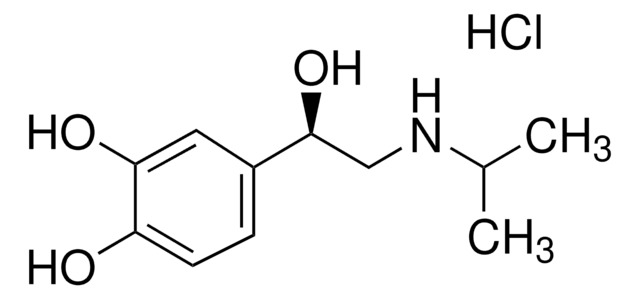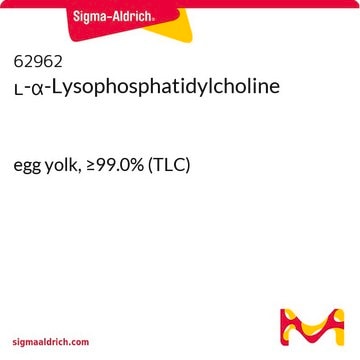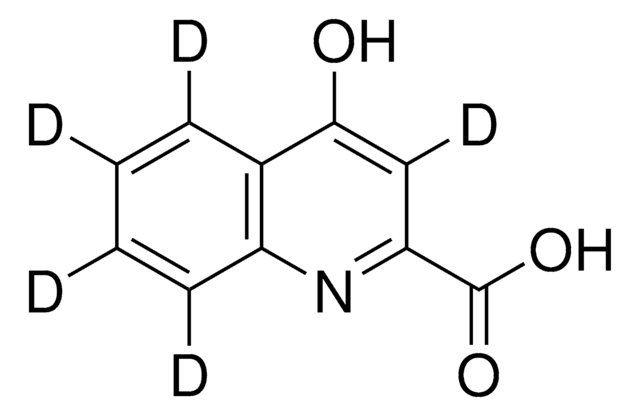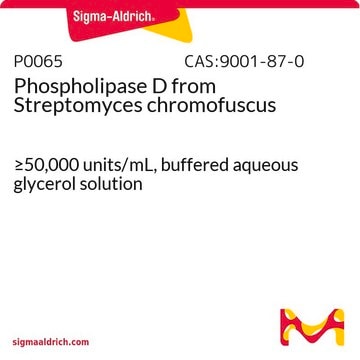L1381
L-α-Lysophosphatidylcholine from bovine brain
≥99%, Type V
Sinónimos:
1-Acyl-sn-glycero-3-phosphocholine, L-α-Lysolecithin
About This Item
Productos recomendados
description
zwitterionic
type
Type V
assay
≥99%
lipid type
phospholipids
storage temp.
−20°C
General description
Application
- to determine the dose-dependent high-mobility group box 1 (HMGB1) release in macrophage and monocyte cultures by production of lysophosphatidylcholine (LPC)[3]
- for lysolecithin demyelination of mice brain tissue[4]
- for demyelination of axons[5]
Biochem/physiol Actions
Features and Benefits
Other Notes
Storage Class
11 - Combustible Solids
wgk_germany
WGK 3
flash_point_f
Not applicable
flash_point_c
Not applicable
ppe
Eyeshields, Gloves, type N95 (US)
Elija entre una de las versiones más recientes:
¿Ya tiene este producto?
Encuentre la documentación para los productos que ha comprado recientemente en la Biblioteca de documentos.
Los clientes también vieron
Active Filters
Nuestro equipo de científicos tiene experiencia en todas las áreas de investigación: Ciencias de la vida, Ciencia de los materiales, Síntesis química, Cromatografía, Analítica y muchas otras.
Póngase en contacto con el Servicio técnico










